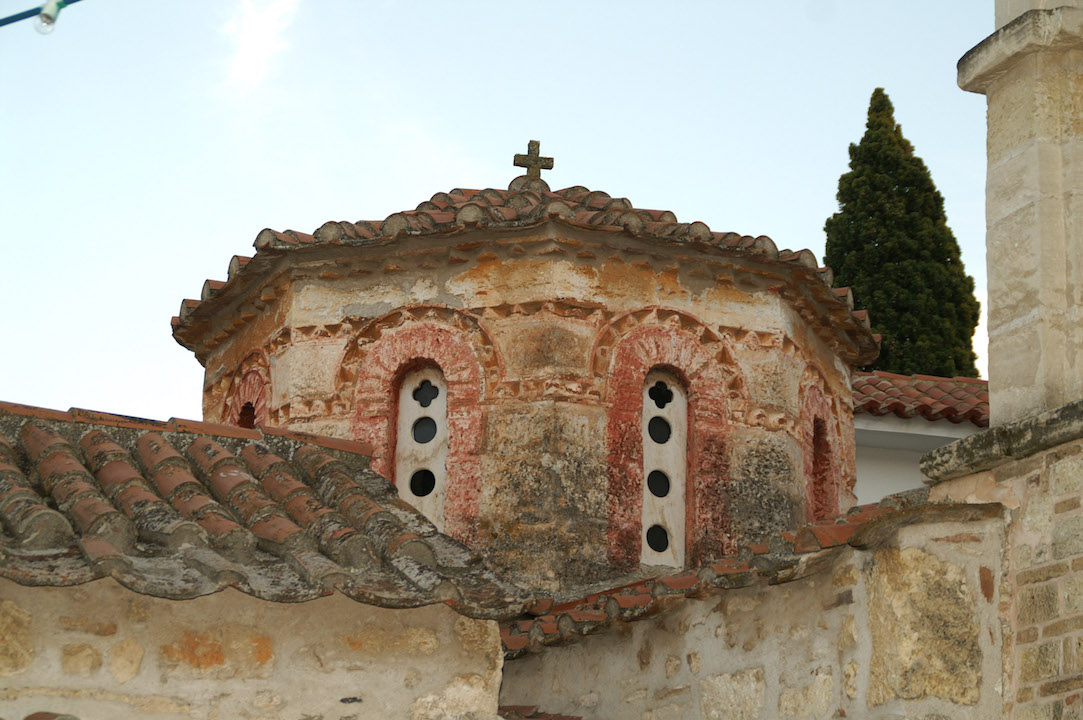Description
A special reference should be made to the small catholicon of the important monastery of Agios Ierotheos, close to Megara, whose temple architectural type was cross-in-square. The building is still preserved quite well, despite the interventions that have been applied in the passing of time. The chapel at its north side is a posterior addition. The fumes of the candles that had accumulated, throughout the several years, in the temple’s walls, did not allow its high quality wall-paintings to show their beauty, even though the temple was made known in 1902 in a relative publication of Lampakis(1899). The wall-paintings shook off the markings of time after the cleaning and maintenance that was contacted in 1978 as an initiation (of the First Committee of Byzantine Antiques of Attica and the Direction of Byzantine Antiques of Archeological Service).
These procedures revealed that the dome bears a wall-painting estimated in the 12th century, which had replaced an older layer of wall-paintings which dates back at 11th century. The folksy character of the catholicon does not allow an exact dating of the wall-paintings as a whole. However, the dome’s wall-painting, as also an assiduous study of the wall-paintings in general, place the temple with a relative assurance in 12th century. Moreover, the temple rescues some posterior wall-paintings, which are dated back at 16th or 17th century and are attributed to the painter Antonios. Interesting enough is the peculiarity of the illustrated design of the dome, which shows a whole body presentation of Jesus. A similar illustration exists in the temple of Christos close to Megara and is estimated in the second half of the 13th century. Indisputably, the latest one has as a model the example of Agios Ierotheos’, as these two monuments are close to one another.
These procedures revealed that the dome bears a wall-painting estimated in the 12th century, which had replaced an older layer of wall-paintings which dates back at 11th century. The folksy character of the catholicon does not allow an exact dating of the wall-paintings as a whole. However, the dome’s wall-painting, as also an assiduous study of the wall-paintings in general, place the temple with a relative assurance in 12th century. Moreover, the temple rescues some posterior wall-paintings, which are dated back at 16th or 17th century and are attributed to the painter Antonios. Interesting enough is the peculiarity of the illustrated design of the dome, which shows a whole body presentation of Jesus. A similar illustration exists in the temple of Christos close to Megara and is estimated in the second half of the 13th century. Indisputably, the latest one has as a model the example of Agios Ierotheos’, as these two monuments are close to one another.




